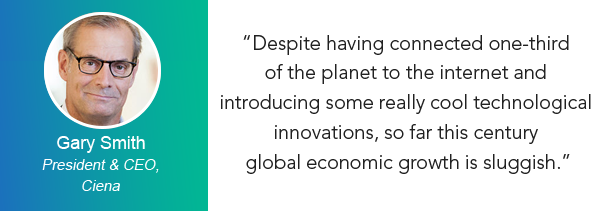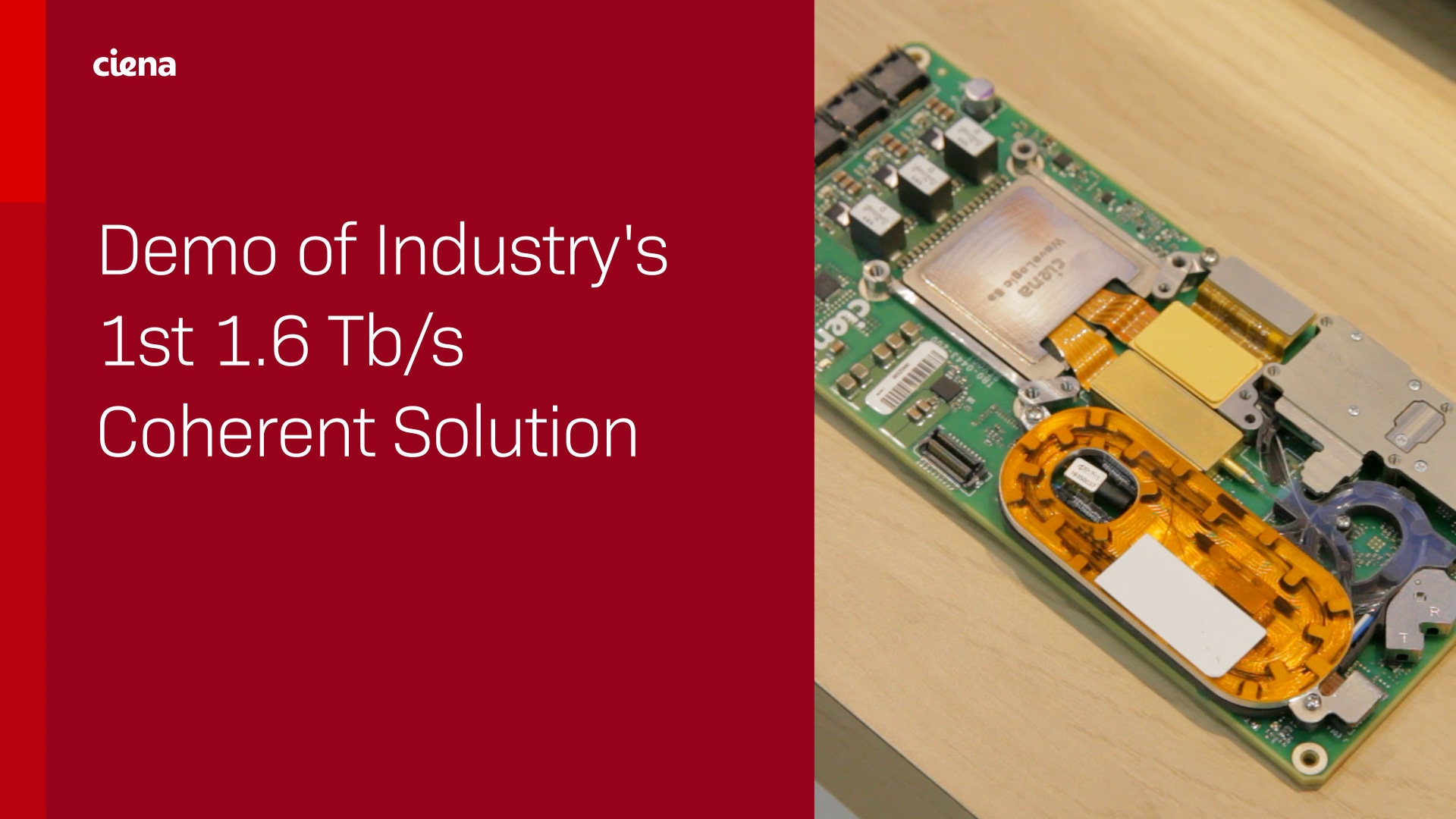Realizing the Digital Age: Why connecting the planet may not be enough…
Gary Smith is Ciena’s President & CEO, having served as Ciena’s chief executive for fourteen years. Gary is a member of President Obama's National Security Telecommunications Advisory Committee, and serves on the board of directors for Avaya and CommVault Systems. This piece was originally published on Gary’s LinkedIn blog.
Our industry is diligently focused on leveraging the power of the internet by delivering connectivity on a global basis (and hopefully helping close the digital divide) whilst enriching the experience and creating disruptive new business models through massively cool innovations such as smart phones, the Internet of Things (IoT), virtualization, augmented reality, 3D printing, robotics, artificial intelligence and big data analytics, among others.
Essentially, as techno optimists, we are laboring under the firmly-held belief that we just need to connect the planet. Adding in the compounding effect of the aforementioned innovations, we believe we will truly transform the world via connectivity and deliver a step-function improvement in both productivity and the quality of life globally.
But is a connected planet alone enough to realize the promise of a truly Digital Age? Moreover, an age whose inventions we assume will be at least as impactful as those of previous industrial revolutions?
Flavoring that is some concerning data …
Despite having connected one-third of the planet to the internet and introducing some really cool technological innovations, so far this century global economic growth is sluggish (see previous “Is the Digital Revolution driving growth” post) and the adoption of new business models – although exciting – is still nascent. Take, for example, that only just over 7% of all retail purchases are currently executed via e-commerce (U.S. Census Bureau).
However, we also need to understand the height of the bar created by the previous industrial revolutions before we can lay claim to grandiose promises of worthy comparison.

The "Golden Age" of Economic Growth
According to the Oxford economist Max Roser, from the Roman Empire until the 18th century, global economic growth was generally stagnant (0.2%). During the first industrial revolution from 1770 to 1870, growth accelerated to approximately 1% in select economies – namely Britain and a few Western European countries. But, between 1870 and the 21st century, also known as the second industrial or “technological” revolution, the standard of living effectively more than doubled in industrialized nations, as did life expectancy rates, rising from approximately 30 to 70 years of age.
Some eminent economists and social thinkers believe that we are unlikely to ever replicate such massive and unprecedented step function gains, declaring that we essentially experienced a true “Golden Age.” But to make such a claim, we need to take a closer look.
As author Jeremy Rifkin surmises, these historical economic gains were facilitated by the confluence of multiple transformative inventions in three areas – a communications medium, a power source and a logistical mechanism – working together to manage, produce and deliver goods and services. To illustrate this thinking, the first industrial revolution invented the telegraph, fossil fuels and steam transport for trains and ships. The second revolution invented phones, electricity and the combustion engine enabling automobiles and jet planes. It was not a single sector or invention, but rather this triumvirate of elements working together to improve the value chain and productivity.

Broadening our View
Given this framework, are we perhaps taking too narrow a view of the interdependencies that are required to drive the third industrial revolution? One that does not just deliver cool refinements of previous inventions, but one that is globally transformative requiring equally disruptive innovations in sectors of not just ICT, but also energy and transportation? One that effectively delivers the “IoT” comprised of a Communications Internet, an Energy Internet, and a Logistics Internet that work in harmony. Such a model would form a decentralized, completely digital, intelligent and integrated global infrastructure platform that moves economic activity across the value chain, providing a new paradigm for stimulating and enabling disruptive new business models.
Many in the ICT community would argue that we are already in grave danger of actually delivering on the communications part of the equation, for which Ciena has played a key role with disruptive innovations like virtual fiber that have contributed toward delivering a fully digitalized, decentralized network at close to zero marginal cost from a usage perspective. And that progress is already providing global access to the internet, mobile connectivity, virtual compute and storage, artificial intelligence, big data analytics etc., which are beginning to offer genuine game changing possibilities to the world.
Rifkin argues, however – and I agree – that to realize the efficient economics of the digital age, this same decentralized, digital democratization approach needs to be brought to bear on energy and logistics, where we are still essentially operating on the economics of a centralized, fossil fuel, previous industrial revolution and ‘planet unfriendly’ - based model. Whilst considerable investment, innovation and progress can be evidenced in the energy and transportation sectors - solar, wind, hydrogen fuel cells, natural gas, nuclear fission, biomass derived clean fuels, electric powered and self-driving vehicles and industrial drones - one suspects that given the nature and massive relative scale of the legacy infrastructure that needs to be disrupted, migrated and/or replaced to provide efficient distributed power and logistics, energy and transport maybe laggard partners in helping realize the digital revolution…
So, I will admit that even as a leading innovator in communications technology, we have to recognize that sometimes the network alone may not be enough.






